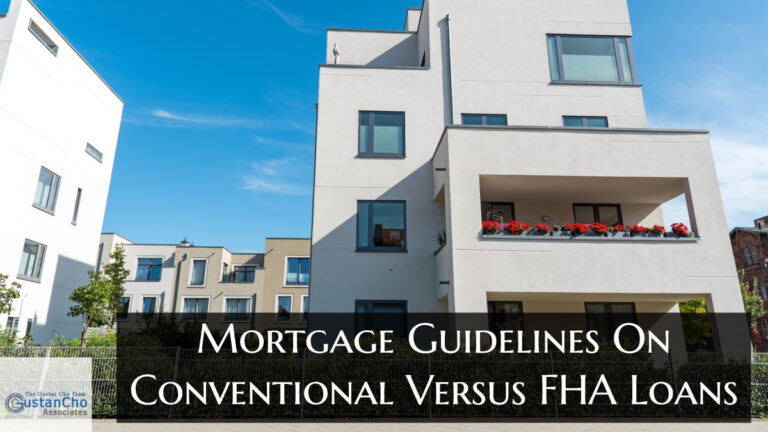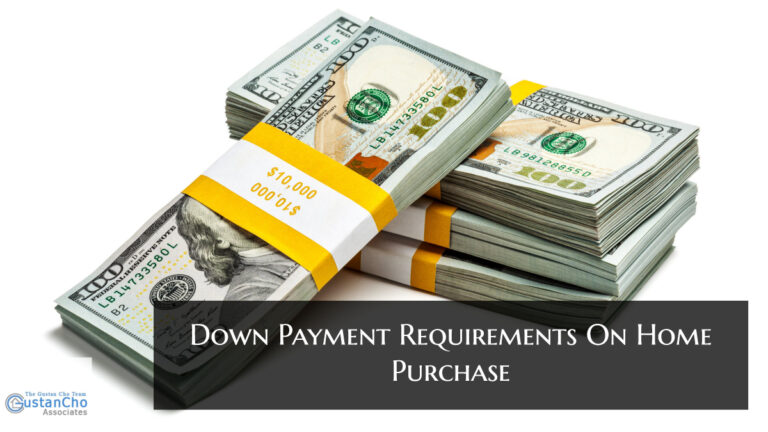Fannie Mae Foreclosure Guidelines on Conventional Loans
This guide covers Fannie Mae Foreclosure Guidelines on Conventional Loans. In your homeownership journey, setbacks can be disheartening, especially in financing. Many people will usually go for mortgages to finance their investments. But qualifying for a mortgage becomes very challenging for those who have had financial setbacks affecting their credit history. This is particularly true for conventional loans, which, as you probably know, have stringent requirements for eligibility. John Strange, a senior loan officer at Mortgage Lenders For Bad Credit, explains about Fannie Mae Foreclosure Guidelines as follows:
When discussing financial setbacks, we refer to bankruptcy, tax liens, judgments, or foreclosures. Focusing on foreclosures, let’s start by stating that the sting of foreclosure can leave lasting effects on an individual, both financially and emotionally. When applying for a conventional mortgage, foreclosure becomes a major stumbling block, as it can make it difficult for you to get approved.
Despite the challenges and uncertainty that follow such a setback, hope exists. A foreclosure may temporarily dash your dream of becoming a homeowner, but it doesn’t condemn you to a lifetime of renting or living in limbo. There is a pathway for you to make things right and a chance to take control of your financial situation. And this guide is all about: what are the specific strategies you can employ to fix all the hurdles which will boost your likelihood of being eligible for a conventional loan? We will add anything else you might need to understand FANNIE MAE Foreclosure Guidelines on conventional loans.
What is a foreclosure?
Simply put, a foreclosure is a legal process through which a lender, typically a bank or mortgage company, takes ownership of a property due to the borrower’s failure to meet the financial obligations outlined in the mortgage agreement. Many lenders consider this action a last resort when borrowers consistently fail to make timely mortgage payments. Two specific reasons result in financial hardship, and they are financial hardship. Alex Carlucci, a senior loan officer at Mortgage Lenders For Bad Credit, explains the three types of foreclosures in residential lending:
There are three types of housing events, per FANNIE MAE Foreclosure Guidelines: A full standard foreclosure, a deed-in-lieu of foreclosure, and a short sale. Fannie Mae Foreclosure Guidelines have separate waiting period after a housing event guidelines under each of these three different types of foreclosure.
Here, we refer to the usual unforeseen circumstances such as job loss, reduction in income, medical expenses, divorce, or economic downturns that can significantly impact a borrower’s ability to make mortgage payments. In most cases, borrowers may find it challenging to meet their financial obligations, leading to missed payments and foreclosure.
Getting Approved For Conventional Loans After Foreclosure
Lenders want a waiting period requirement after foreclosure, a deed-in-lieu of foreclosure, or a short sale. Mortgage lenders want re-established credit with new credit and no late payments after a housing event for borrowers to be eligible for conventional loans after foreclosure. Lenders understand the borrower’s prior behavior before the foreclosure.
There are times foreclosure may result from poor financial management or irresponsible behavior by the borrower, which can include excessive debt, overspending, failure to budget effectively, or neglect to prioritize mortgage payments. Additionally, borrowers who take on risky loan products, such as adjustable-rate mortgages with substantial payment increases, may be unable to afford the higher costs when the interest rates adjust.
So, what are the implications of a foreclosure on a borrower? Loss of property – first and foremost, foreclosure usually results in property loss and the equity you have built over time. It can be emotionally distressing for individuals and families who must leave their homes and uproot their lives from all they’ve ever known. Damaged credit – secondly, foreclosures can severely impact an individual’s credit history. What happens is that the foreclosure itself will feature on your credit report, where it remains visible for up to seven years, which makes obtaining new loans or credit lines more challenging. Don’t forget that the negative mark on your credit history can also negatively impact other aspects of life, such as employment opportunities or rental applications.
Getting Qualified and Approved For Credit After Foreclosure
A prior foreclosure, a deed-in-lieu of foreclosure, or a short sale will get you limited access to financing. As we just mentioned, if you have experienced foreclosure, you may have difficulty obtaining future loans, including mortgages, car loans, or personal loans. This is because lenders typically view borrowers with a foreclosure history as higher-risk applicants, which can lead to higher rates or stricter eligibility criteria.
At last but certainly not least, a foreclosure can be emotionally devastating for individuals and families. The loss of a home, financial stress, and uncertainty can lead to shame, guilt, and a sense of failure. Therefore, borrowers need to seek emotional support during this challenging period and understand that foreclosure does not define their worth or prospects.
The emotional and psychological tolls can occur with a foreclosure, a deed-in-lieu of foreclosure, or a short sale but should not affect you. The best cure for a prior foreclosure is time. As the housing event ages, it less impacts your credit profile. The best remedy for a housing event is to rebuild and re-establish credit by getting three to five secured credit cards and two to five credit rebuilder accounts.
What are conventional loans?
What are their features? A conventional loan is a form of mortgage that is originated and funded by private lenders, including banks, credit unions, or mortgage companies, and they adhere to guidelines set by two government-sponsored enterprises: Fannie Mae and Freddie Mac. The federal government does not back the loans through agencies such as the FHA, VA, or USDA. Some of the key features of these mortgages include the following: Conventional mortgages come in various forms, which include fixed-rate mortgages and adjustable-rate mortgages (ARMs). In a fixed-rate loan, the interest rate remains constant throughout the loan term, typically 15 or 30 years. And in an ARM, the interest rate is initially fixed for a certain period, such as 5, 7, or 10 years. After the initial fixed-rate period on an ARM, the ARM adjusts periodically based on market conditions.
FANNIE MAE Foreclosure Guidelines on Conventional Loans
Down payments – compared to some government-backed loans, conventional loans typically require a higher down payment. And while this requirement can vary based on factors such as creditworthiness and loan terms, a standard down payment requirement is 20% of the
purchase price. However, its worth noting that some lenders offer conventional loans with lower down payment options, such as 3% or 5%, but private mortgage insurance (PMI) may be necessary.
Government entities Fannie Mae and Freddie Mac set the limits for conventional loans. These limits determine the maximum loan amount that an individual can borrow while qualifying as a traditional loan, and they have adjusted annually and vary depending on the location and property type.
Credit history – the guideline set concerns the borrower’s creditworthiness. The lender will assess your credit score, payment history, and overall credit profile to determine your mortgage management ability. While credit requirements vary among lenders, a good credit score, typically above 620, and a positive credit history are generally expected. Credit requirements on conventional loans generally have stricter credit scores and credit history criteria than federally-backed loans. Lenders typically prefer individuals with good to excellent credit scores (usually above 620), a stable employment history, and a demonstrated ability to manage debt responsibly.
FANNIE MAE Guidelines on Properties Eligible For Conventional Loans
Conventional loans offer flexibility regarding the types of property you can buy. You can use it on primary residences, second homes, and investment properties. Additionally, conventional loans provide options for refinancing existing mortgages. Mortgage insurance on conventional loans is required when borrowers have less than 20% home equity. A borrower must only pay mortgage insurance on a traditional loan if their down payment is less than 20%. The insurance cover protects the lender if the borrower defaults on the loan. It is an additional monthly cost that can be canceled once the loan-to-value ratio reaches 80%, based on the original property value.
FANNIE MAE Foreclosure Guidelines on Conventional Loans
It is possible to apply for a conventional loan after foreclosure. However, there are specific waiting periods and eligibility requirements you will have to meet first. These are guidelines that Fannie Mae and Freddie Mac have set. Following a foreclosure, a waiting period is typically before you can become eligible for a new conventional loan. The waiting period depends on the circumstances surrounding the foreclosure, the type of housing event, and your ability to demonstrate financial responsibility.
The waiting period requirements after a standard foreclosure are seven years. This is the standard waiting period from the completion date of the foreclosure, and it applies to borrowers who experienced foreclosure due to financial difficulties and were unable to make the mortgage payments. There is a four-year waiting period after a deed-in-lieu of foreclosure or short sale to qualify for conventional loans. FANNIE MAE Foreclosure Guidelines on Foreclosure are substantially longer than government-backed loans.
The lender will evaluate your employment history and income stability to determine your loan repayment ability. Therefore, you have to demonstrate consistent employment and a reliable income source. The debt-to-income ratio on conventional loans is capped at 50% back-end. There is no front-end debt-to-income ratio cap on conventional loans. The conventional lender will also want to assess your ability to make timely monthly payments by evaluating your monthly bills and obligations against your monthly income. Many lenders usually prefer a DTI ratio that doesn’t exceed 45% even though FANNIE MAE guidelines on debt-to-income ratio is 50%. Financial documentation – As part of the loan application, you must provide various financial documents, including bank statements, tax returns, pay stubs, and proof of assets. These documents help lenders assess your financial stability and loan repayment ability.
What can one do to enhance their chances of approval on conventional loans
As previously mentioned, after a foreclosure, qualifying for a conventional loan becomes quite a challenge and will require some work from you if you are to qualify. With that said, there are numerous strategies you can employ to enhance your chances of getting approved once you submit your loan application. They include rebuilding your credit. Rebuilding credit after foreclosure is crucial for borrowers seeking to improve their financial standing and increase their chances of loan approval. A strong credit score enhances your eligibility for a conventional loan and opens doors to better interest rates, favorable terms, and improved financial opportunities.
Some strategies on how to enhance chances of approval on conventional loans is paying your bills on time – the most obvious strategy is one where you consistently make on-time payments without fail. You must ensure that you pay/meet all your bills, including credit cards, loans, utilities, and rent, among others, by their due dates.
If you have to, you can consider setting up automatic payment reminders to avoid ever missing a payment. Review and monitor your credit report – as you pay your bills, it is essential to keep monitoring your credit reports to ensure that everything is entered correctly and that if there are any mistakes, they are disputed immediately. Doing this ensures that the credit reports accurately reflect your current financial situation. Reduce debts – you need to work on reducing your debts by creating a budget to manage your expenses effectively and allocating extra funds to pay down outstanding debts. We recommend focusing on high-interest debts first, such as credit cards, to save on interest
charges and improve your credit utilization ratio.
Consider secured Credit Cards or Instalment Loans
You can also consider obtaining a secured credit card or installment loan to establish a positive credit history. Secured credit cards need a cash deposit as collateral, while installment loans involve borrowing a specific amount with fixed monthly payments. Ensure the issuer reports your activity to the credit bureaus, and use these accounts responsibly by making timely payments.
Maintain low credit utilization– this represents the percentage of the accessible credit you currently use against your credit limit. Aim to maintain your utilization ratio below 30% across all credit accounts, which you can achieve by paying down balances and avoiding maxing out your credit cards.
Don’t close your existing accounts – keeping existing credit accounts open is generally advisable, especially if they have a positive payment history. Closing existing accounts can shorten your credit history and reduce the overall available credit, which may negatively affect your credit score. This process takes time! Therefore, you have to be patient and persistent in your efforts. Just remember that by consistently practicing responsible financial practices, you will gradually improve your credit score.
FANNIE MAE Foreclosure Guidelines on Establishing Stable and Secure Employment
Establish a stable employment history – most conventional loan lenders prefer borrowers with a steady employment history, as it indicates a reliable source of income, which also translates to your ability to make timely mortgage payments every month. Therefore, you must maintain consistent employment and avoid frequent changes during the waiting period. And if possible, strive for career advancement or higher income levels to demonstrate financial stability.
Manage your debt-to-income ratio – managing your debt-to-income ratio (DTI) is essential for maintaining a healthy financial profile and improving your chances of loan approval, especially when applying for a conventional loan after foreclosure. Here are some tips/strategies on how you can achieve this:
Calculate your DTI – begin by calculating your DTI by adding up all your regular debt payments, including credit cards, loans, and other obligations. Then divide that total amount by your gross monthly income. Multiply what you get by a hundred to get your DTI
percentage. You need to create a realistic budget that outlines your income and expenses. Then, evaluate your spending habits and identify areas you can cut back. Allocate a portion of your income toward debt repayment, ensuring that your debt payments are within
your budgetary limits.
FANNIE MAE Foreclosure Guidelines on Income and Credit
You must also reduce outstanding balances to decrease debt load and improve your DTI ratio. Consider using extra funds, such as bonuses or tax refunds, to make larger debt payments. As you do this, you should avoid taking on new debt, as it will increase your monthly obligations and, in turn, improve your DTI ratio. You can begin by setting a savings goal, then create a comprehensive budget where you outline your income and expenses and identify those areas where you can cut back to allocate more funds to savings. You should also explore ways to increase your revenue to accelerate your savings. And lastly, you can also look into Down Payment Assistance Programs in your local state, as they can greatly assist.
Explore opportunities to increase your revenue, such as taking on a second job, freelancing, or pursuing additional education or certifications to enhance your career prospects. An increase in income can help improve your DTI by boosting your debt-
paying capacity.
In some cases, consolidating multiple debts into a single loan or refinancing existing loans can help streamline your debt payments and potentially lower your interest rates. This approach can make managing your debts and improving your DTI easier. Save for down payment – while conventional loans usually allow lower down payments, having a larger down payment can strengthen your loan application, as it essentially shows financial responsibility and reduces the loan-to-value (LTV) ratio, which can positively impact your loan terms.
Explore alternative options
Prepare solid financial documentation – compile all necessary financial documents, including pay stubs, tax returns, bank statements, and proof of assets. Ensure that these documents accurately reflect your financial stability and ability to afford the loan. These are the common strategies to enhance your chances of getting approved. And even as you ready yourself to commence the journey, we recommend you partner with a reputable mortgage professional with experience working with borrowers who have gone through foreclosure. They can provide personalized guidance, help you understand lender-specific requirements, and assist in finding suitable loan options for your situation. If you are still going through challenges, you should know that there are alternative financing options that you can explore. They include the following:
HUD Versus FANNIE MAE Foreclosure Guidelines on FHA loans
FHA loans are home loans that the FHA (federal housing administration) guarantees and provide more flexible qualification criteria, perfectly suited for individuals who have gone through foreclosure. The fact that the government insures them means it offloads a significant
level of risk from the lender, which is why he can extend the loans to persons with less-than-perfect credit histories. FHA loans have a three-year waiting period after the recorded foreclosure date, a deed-in-lieu of foreclosure, or a short sale. Conventional loans have a seven-year waiting period after a standard foreclosure, a four-year waiting period after a deed-in-lieu of foreclosure, and a four-year waiting period after a short sale per FANNIE MAE Foreclosure Guidelines.
VA Versus FANNIE MAE Foreclosure Guidelines on VA loans
VA loans are available for veterans, active military personnel, and surviving military spouses. The Department of Veteran Affairs insures VA loans, and they often come with favorable terms, including no down payment requirements and competitive interest rates. VA loans have a two-year waiting period after the recorded foreclosure date, a deed-in-lieu of foreclosure, or a short sale. Conventional loans have a seven-year period after a standard foreclosure, a four-year waiting period after a deed-in-lieu of foreclosure, and a four-year period after a short sale per FANNIE MAE Foreclosure Guidelines.
USDA Versus FANNIE MAE Foreclosure Guidelines on USDA Loans
USDA loans are for those in rural areas, this is the other financing option you should look into. These loans also offer low or no down payment options and usually have more lenient credit requirements. USDA loans have a three-year waiting period after the recorded foreclosure date, a deed-in-lieu of foreclosure, or a short sale. Conventional loans have a seven-year waiting period after a standard foreclosure, a four-year waiting period after a deed-in-lieu of foreclosure, and a four-year waiting period after a short sale per FANNIE MAE Foreclosure Guidelines.
State and local housing programs
Many states and municipalities offer housing programs that provide down payment assistance, closing cost assistance, or favorable loan terms for first-time homebuyers or low-income borrowers. These programs vary by location, so you need to research the housing options available in your area.
Seller financing
In other cases, the seller of a property may be willing to finance the purchase directly. What happens is that with seller financing, you make payments to the seller instead of obtaining a traditional mortgage from a financial institution. This option is beneficial, especially if you cannot secure traditional financing due to foreclosure or if the seller is motivated to sell quickly.
Lease-to-own option
In this option, you enter into a lease agreement with the option to purchase the property at a future date. A part of your monthly rent will be credited toward the purchase price, allowing you to build up equity over time. This option can be advantageous,
especially since you need more time to enhance your credit or save for a larger down payment. When considering these options, you must carefully review each alternative option’s terms, interest rates, and eligibility requirements to avoid any surprises during payments.
In Summary on fannie mae foreclosure guidelines
We conclude that securing a conventional after a foreclosure is possible, albeit with specific waiting periods and eligibility requirements. Following the tips you read can increase your chances of securing a conventional loan and achieving your goal of owning a home again. Everyone’s situation is unique, and specific requirements or considerations may be based on your circumstances. It is for this reason we recommend you seek professional help to be able to navigate through the challenges posed by the foreclosure and also to position yourself for future homeownership success.







